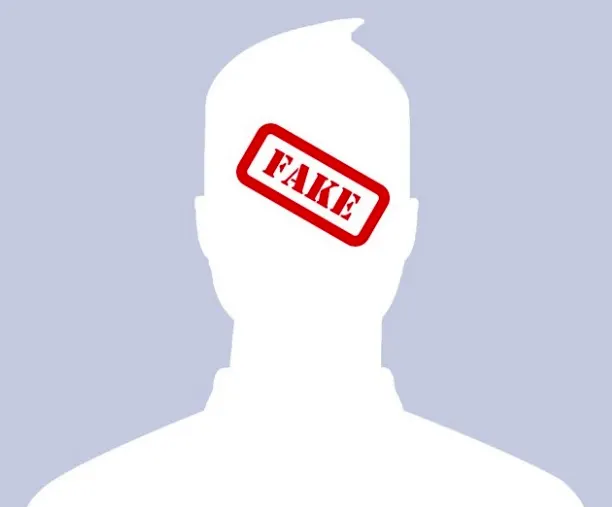Expert tips on fake account Instagram check and authenticity reviews on other social networks
Posted on 15/10/24 02:24 pm

The term "fake" typically means "unreal" or "counterfeit." On the web, it refers to fake accounts on social networks. These accounts are often created for purposes like inflating followers and likes, sending spam messages, distributing malware, trolling, or simply remaining anonymous. In this article, we’ll share tips on how to check for fake accounts on Vkontakte, Facebook, Twitter, and Instagram, so you can avoid getting scammed.
How to Identify a Fake Instagram Account
How do you confirm if an Instagram account is fake? How can you be sure a page on Twitter or Facebook belongs to a real person and not a scammer? In this guide, we'll highlight the key indicators to help you detect fake profiles across various social media platforms.
Check Photos for Facebook or Instagram Fake Accounts
Pay close attention to the details of the photos. First, look at the upload dates. A real user typically uploads photos on different days. For example, if you’re creating an Instagram profile, you probably won’t upload all your photos on the same day. You’ll add new images gradually—maybe daily, weekly, or occasionally. The photo quality will likely vary, and not every picture will be perfect.
In contrast, fake accounts often have only a few photos, sometimes all uploaded on the same day and often from the same location. Although more sophisticated scammers might add photos from different locations, they still tend to post them all at once.
Reverse Image Search to Detect Fake Accounts
You’ve probably come across profiles featuring photos of celebrities—that's an old trick. Nowadays, smarter scammers steal pictures from real users on other social networks or messaging apps. To check if an avatar is real, you can use Google or Yandex reverse image search.
Friends and Followers: A Key to Spotting Fakes
As mentioned, many fake accounts are created for spamming advertisements. To achieve this, scammers need a large number of friends and followers. To identify a fake Instagram or Facebook account, scrutinize their list of friends. If you see a large number of connections between people who don’t seem related in any way—different ages, social statuses, and locations—that’s a red flag.
This method works for other platforms too. You should also check their timeline: if there are no active discussions or all posts were published on the same date, the account is probably fake.
Posts and Engagement: Another Red Flag
A fake account’s timeline will likely contain random reposts and unorganized content. You won’t see personal posts, thoughtful comments, or regularly updated personal photos and videos. Real users tend to delete unnecessary posts, leave meaningful comments, and share personal moments.
Suspicious Usernames
Real users usually use their actual names or slight variations. Fake accounts, however, often have catchy or marketing-related usernames like "cute_as_ducks" or "StylishBags." While real users may also come up with creative nicknames, it’s rare.
Some fake accounts even try to mimic real names by changing, adding, or removing a few letters. Scammers often use celebrities' names, assuming that a message from "Donald Trump" or "Justin Bieber" will raise no suspicion.
Personal Information: A Clue to Authenticity
When conducting a fake account check on Twitter or Facebook, see if there’s any personal information about the user—like their education, place of residence, interests, or family. Most real profiles contain at least some of this information. Sometimes, scammers fill in this information with false details, like claiming they live in popular cities such as New York or Paris or attend prestigious schools like Harvard. It’s suspicious when someone claiming to live a lavish life then tries to sell you herbal supplements or sign you up for an online casino.
Conclusion
By using the tips mentioned above, you can avoid falling prey to fake accounts and scammers. However, keep in mind that some real users might post a lot of spam or irrelevant content, making it difficult to distinguish between legitimate and fake profiles.
Recent Posts
- How to Send SMS Using Twilio without a Phone Number
13/08/2025 - How to Create a New Hily Account Easily in 2025
10/08/2025 - Buy Telegram Account Within Several Minutes 2025
08/08/2025 - How to Create a CMT Cuzdan Wallet without a Phone Number
07/08/2025 - How to Register in Snapchat without a Phone Number
01/08/2025 - Registration on JustDating without a Phone Number
30/07/2025 - How to Complete Happn Sign Up Process without a Phone Number
23/07/2025 - How to Create Multiple X Twitter Accounts
16/07/2025 - How to Sign Up for PayTM without a Phone Number
12/07/2025 - How to Sign Up for IMO Account without a Phone Number
06/07/2025 - How to Sign Up for Quipp App without a Phone Number
02/07/2025 - How to Complete Shopee Sign Up without a Phone Number
27/06/2025 - How to Sign Up for Venmo without a Phone Number
24/06/2025 - How to Create a Fake VK Account with a Virtual Number
21/06/2025 - How to Use Google Voice without a Phone Number
18/06/2025 - Naver Sign Up Without Phone Number
12/06/2025 - How to Complete Grindr Sign Up Without Phone Number
04/06/2025 - GCash Wallet Registration without a Phone Number
31/05/2025 - Bolt App Sign Up Without a Personal Phone Number
27/05/2025 - MiChat Registration Guide Easy Sign-Up Without a Personal Number
25/05/2025